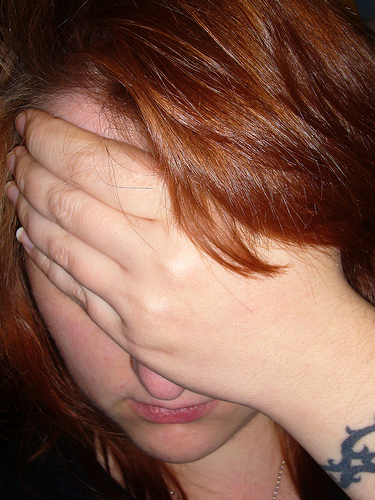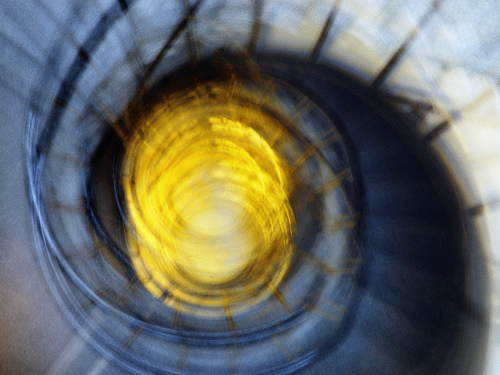Epilepsy is a clinical condition characterized by uncontrolled, involuntary contractions of the muscles of a part or whole of the body. Discrete neurological (brain) regions trigger fluctuations in the electrical potentials in the brain, causing repeated muscular contractions in the area controlled by that part of brain. Epilepsy symptoms are varied for different types of epilepsy.

Epilepsy Symptoms That Spell Trouble
Each type of epilepsy is characterized by a different set of symptoms. Epilepsy symptoms vary in terms of factors like the extent of the seizures (a part or the whole of the body), the duration of seizure episodes, the patient’s levels of consciousness during/after the episode, and his awareness of his surroundings during the seizures.
Epilepsy Symptoms For Certain Types Of Epilepsy
-
Generalized Tonic-Clonic Epilepsy (Grand Mal Epilepsy)
In this type of epilepsy, seizures begin suddenly and without warning. In some cases, individuals may report prior vague perceptions throughout the body. The phase of active seizure is known as the ictal phase, while the phase following the seizure is called the postictal phase. Here are the symptoms for each phase.
-
Tonic Phase
Active muscle contractions (generalized) lasting for a few seconds
-
Clonic Phase
Muscle relaxation that lasts for less than a minute
-
Postictal Phase
- Excessive salivation
- The involuntary passage of urine or stools
- Strenuous breathing
- Unresponsiveness and varying levels of consciousness for a few minutes to a few hours
- Confusion about one’s surroundings
- Headaches
- Muscle pains
The patient’s Electroencephalogram (EEG) shows progressively rising, fast and high amplitude voltage discharges in the neuronal tissue. As the patient recovers from the seizure episode, the EEG almost comes back to normal. Ictal Cry Contractions of the respiratory muscles push the air out of the lungs forcibly. At the same time, the contracting muscles of the larynx (respiratory airway opening) prevent this blast of air from coming out of the respiratory path. This process may produce a loud moan, better known as an ictal cry.
Cyanosis
Cyanosis is characterized by a bluish appearance of the fingertips, the tip of the nose, and the ear lobes, due to insufficient oxygen in the blood. Impaired respiratory muscle movements pull in the respiratory secretions causing impaired lung function, which ultimately leads to cyanosis.
Tongue Bite
When a person forcefully contracts his jaw muscles during a convulsive episode, he runs the risk of severely injuring his tongue if it gets caught in between both the jaws. If this happens, it can be very painful for him. Additional epilepsy symptoms in the case of generalized tonic-clonic seizures include a rapid heart rate, high blood pressure, and dilated pupils.
-
-
Absence Seizures (Petit-Mal Epilepsy)
Absence seizures usually occur among children between 4 and 8 years of age, and they are often characterized by:
- Abrupt onset
- A short episode of unconsciousness that lasts for a few seconds
- Complete postural control
- No postictal confusion
- Frequent seizures, often even up to 100 times a day
Sometimes, certain additional symptoms are noted, such as:
- Repeated and rapid chewing movements
- Rapid eye blinking
- Rapid hand movements
-
Atonic Epilepsy
Here are some symptoms of atonic epilepsy:
- A brief seizure, characterized by a nodding movement of the head or a sudden transient head drop
- Abrupt loss of muscle tone (for about 1 to 2 seconds)
- Impaired consciousness for some time
- No feeling of confusion post seizures
- In some cases, a collapse of the patient to the ground
-
Myoclonic Epilepsy
Myoclonus is characterized by symptoms like:
- Abrupt contraction of the muscles of either a part or the whole of the body
- In the case of Juvenile Myoclonic Epilepsy, the onset of generalized seizures in early adolescence, with single or repeating jerky movements on both sides of the body. They usually occur in the morning after the patient wakes up. Lack of adequate sleep is a precipitating factor in such cases
-
Simple Partial Seizures
Characteristic features of simple partial seizures are:
- No obvious loss of consciousness
- Sensory, motor, autonomic, or psychic symptoms
- Repetitive flexion-extension movements of arms
- Synchronous hand and facial movements
- Onset of seizures in a localized part of the body (such as the fingers), which gradually progress to the whole of the part (such as the hand or the arm)
Additional symptoms
- Altered sensations or Paraesthesias
- Vertigo or dizziness
- Sweating
- “Aura” of epilepsy – A feeling that warns about the onset of seizures

Vertigo or dizziness is one of the symptoms of epilepsy, often seen in simple partial seizures. Epileptics people may experience unusual perceptions like:
- Intense smells (e.g. the odor of burning)
- Flashes of light
- Different crude sounds
These symptoms make the patient look confused and frightened.
-
Complex Partial Seizures
The main difference between simple and complex partial seizures is the lack of awareness of one’s surroundings that occurs during complex partial seizures. In this condition, the seizures begin in a certain part of the body, causing the person to lose contact with his surroundings. The patients does not respond to verbal communication. Typical complex partial seizures exhibit:
- An abrupt motionless state at the onset
- Repeated smacking lip movements and rolling movements of the hands
- A temporary loss of memory wherein the individual cannot recollect the seizure episode after it has occurred
- A state of confusion after the seizure episode, sometimes lasting for hours
As epilepsy can be highly disturbing for the person who has this condition as well as the people around him, it best to take the necessary measures to counter it. The best remedy is to avoid its triggers that act as causes of epilepsy in the first place by taking the necessary steps for epilepsy prevention. If you experience any of the epilepsy symptoms mentioned above, rush to the doctor immediately for epilepsy treatment.